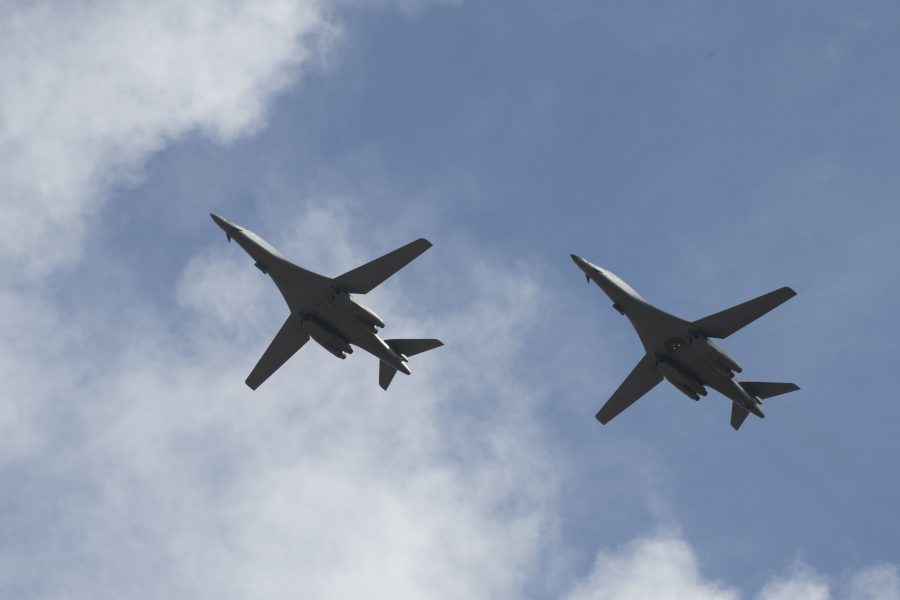Two B-1s deployed to the Pacific on July 17, flying intercept training with Japanese F-15Js before landing at Andersen Air Force Base, Guam, for the first time since May.
The two Lancers from the 37th Bomb Squadron at Ellsworth Air Force Base, S.D., flew directly to the Sea of Japan for the integration training with the Japan Air Self-Defense Force F-15Js as part of the bomber task force deployment.
“Our team has been actively preparing for BTF operations to ensure we’re ready and capable of meeting any requirement across the globe,” said Lt. Col. Lincoln Coleman, 37th Expeditionary Bomb Squadron commander, in a Pacific Air Forces release. “We are excited for the opportunity to integrate with our partners and allies in the Pacific theater and increase our joint lethality.”
Since ending the Continuous Bomber Presence mission in April, Air Force Global Strike Command has sent smaller task force deployments of bombers on direct flights to the Pacific as part of what it calls “dynamic force employment.” Andersen last hosted four B-1s and about 200 Airmen from the 9th Bomb Squadron at Dyess Air Force Base, Texas, in May.
While the B-1s is not nuclear capable, the Air Force has touted the bomber’s ability to carry the Joint Air-to-Surface Standoff Missile and the Long Range Anti-Ship Missile as an important capability in the Indo-Pacific.
“There’s a few people who get a little alarmed when you bring a nuclear bomber into their airspace,” AFGSC boss Gen. Timothy M. Ray said in April. “We look at the B-1 as a great capability: I can land it in a lot of places physically that I can’t land a B-52, and I can operate with more people. So we’re going to feature that a little bit more in the Pacific.”
